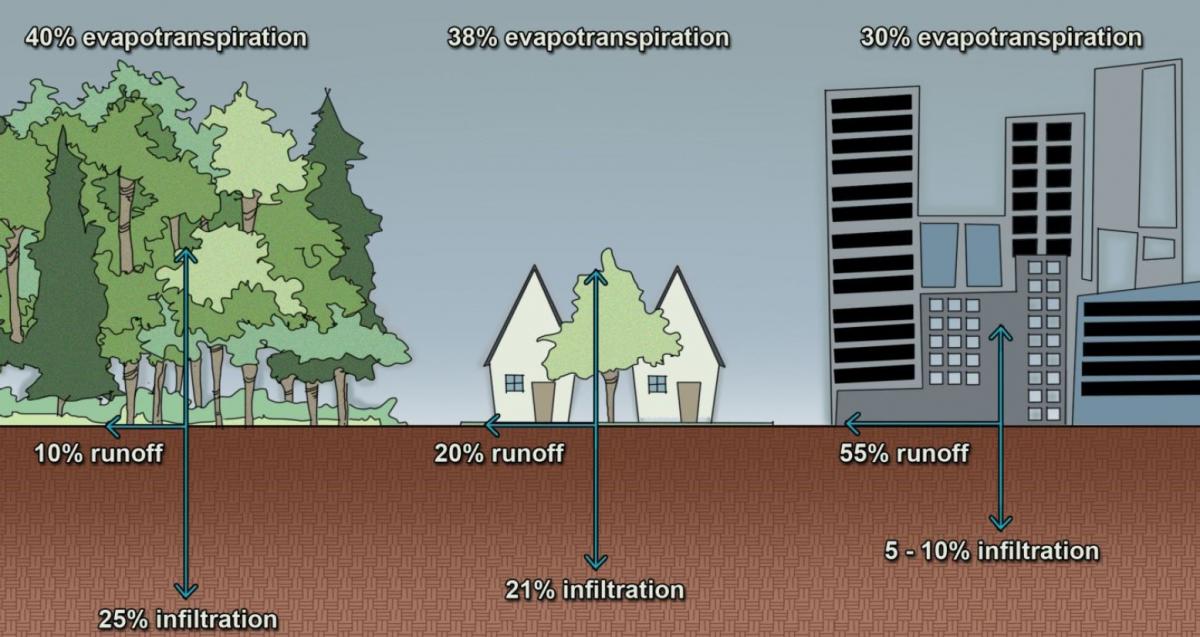Stormwater 101
What is stormwater?
Stormwater is excess water from rainfall and snowmelt that flows over the ground and does not infiltrate into the soil. Human disturbances increase the volume of stormwater generated through the addition of impervious surfaces such as parking lots, rooftops, and paved streets. Stormwater is a concern in urban, suburban, and agricultural areas. As stormwater runoff flows over land or impervious surfaces, it carries trash, debris, and pollutants, including pathogens, nutrients, sediments, heavy metals, and chemicals, into our waterbodies, which can adversely impact water quality. (copied/adapted from https://www.uky.edu/bae/stormwater-management)
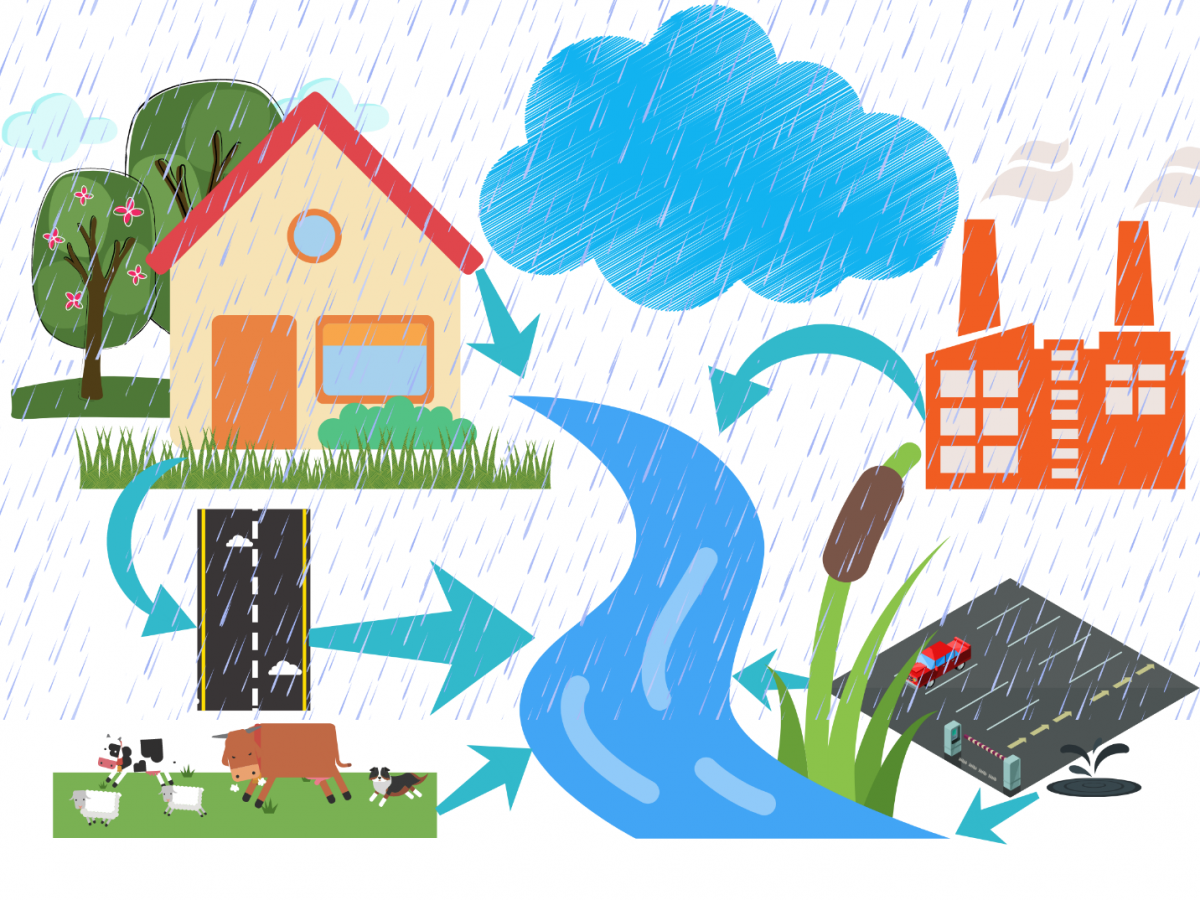
Why does stormwater matter?
Stormwater is important because it flows directly from impervious surfaces into receiving streams. In a separate storm sewer system like UK’s, stormwater runoff does not enter the sanitary sewer and therefore is not treated. Whatever enters a storm drain flows directly into nearby creeks. UK has implemented a wide variety of stormwater best management practices to protect water quality, such as the use of rain gardens, water harvesting systems, green roofs, permeable pavers, riparian buffers, and underground storage. Learn more from https://vimeo.com/91338501.
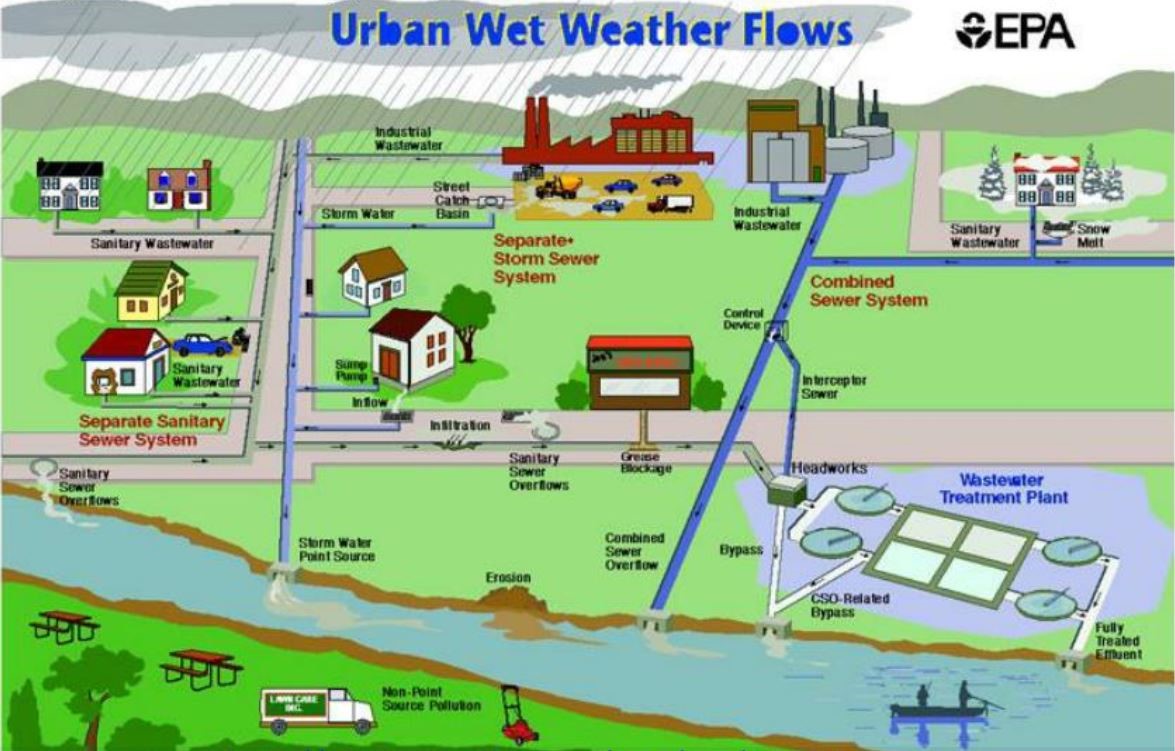
What you can do to protect stormwater
The University of Kentucky’s community can work together to protect stormwater on campus by participating in UK stormwater events, volunteering, and reporting illicit discharges.
Protecting stormwater on campus
- Attend Outreach/Participation Events
UK students, faculty, and staff are encouraged to participate in UK Stormwater events. Past events have included a major planting project around Gluck Pond, CATchment Cleanup at the Farm Road rain garden, and tours of UK’s green infrastructure, including major stream restoration projects on campus. Be on the lookout to participate in future UK Stormwater events.
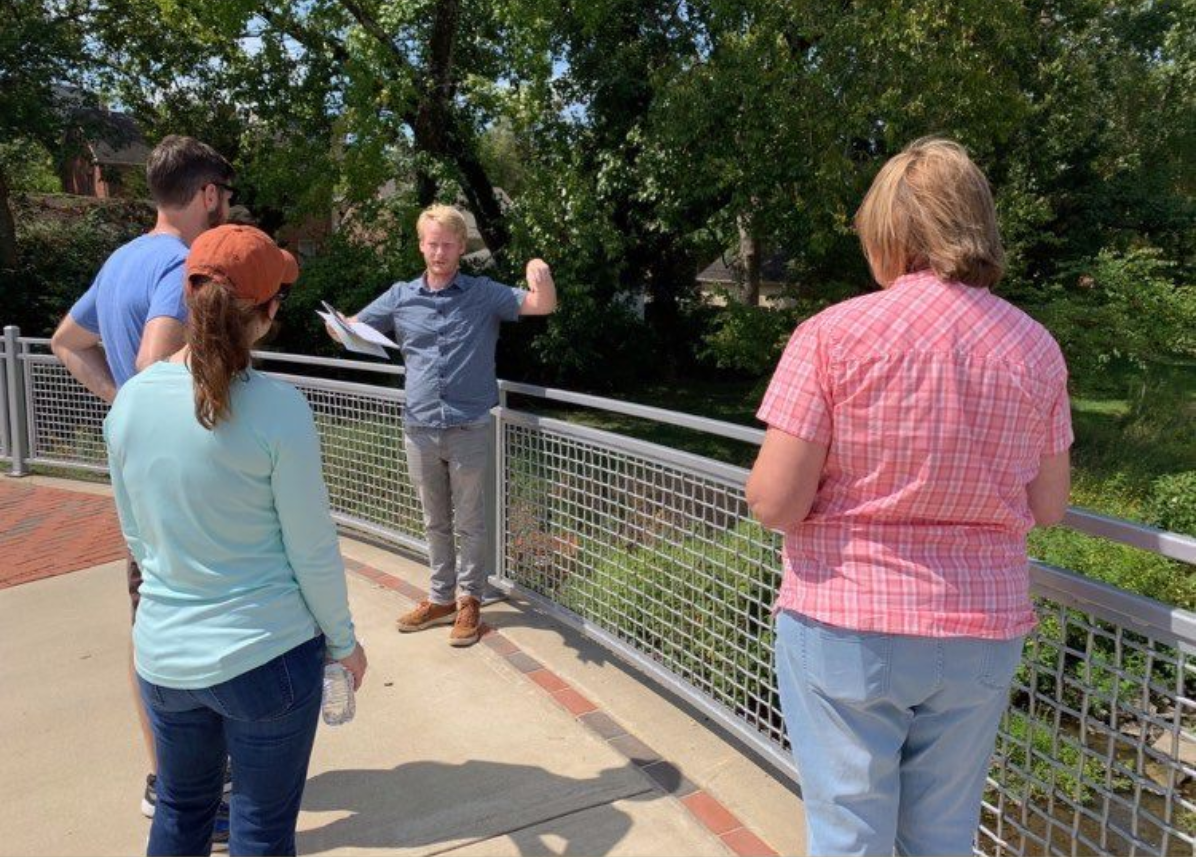
- Raise Awareness/Mark storm drains
The University of Kentucky relies on thousands of storm drains that serve as inlets to move stormwater runoff from campus to receiving waterbodies. Each inlet must remain free of debris and an effort is underway to mark every campus inlet with a stormwater medallion (see photo).
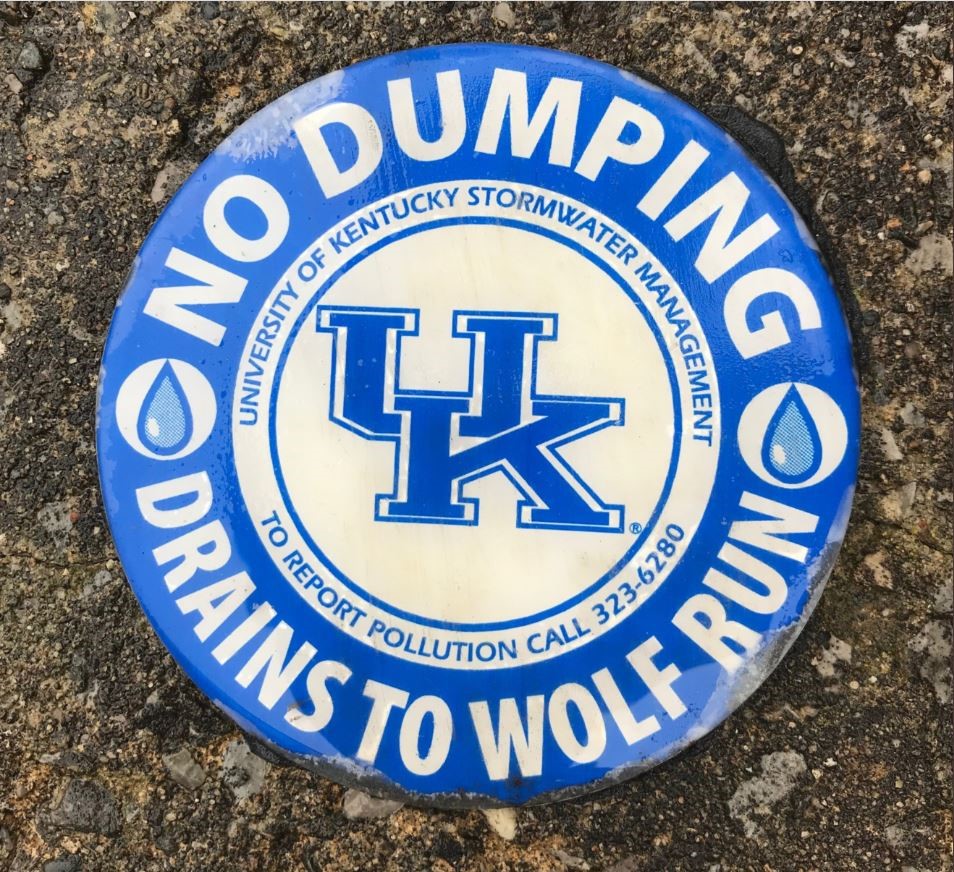
- If you see something, say something – report illicit discharges via the reporting tool
- Suggest changes to how you perform your job duties to make them more sustainable
Protecting stormwater at home
To protect stormwater at home, individuals can take a variety of steps that range from simple behavioral changes to more substantial projects. Residents can install rain barrels, plant rain gardens, grow native plants, compost lawn clippings, replace concrete driveways with permeable pavers, reduce or eliminate the use of fertilizers and other chemicals, and properly dispose of hazardous waste and pet waste. Rain barrels and rain gardens help to divert stormwater runoff from flowing into the storm sewer system. Native plants uptake rainwater and increase soil infiltration capacity while providing valuable habitat and food for native pollinators. Composting lawn clippings, minimizing chemical use, and properly disposing of waste can all help prevent these materials from getting carried by stormwater runoff into receiving streams.
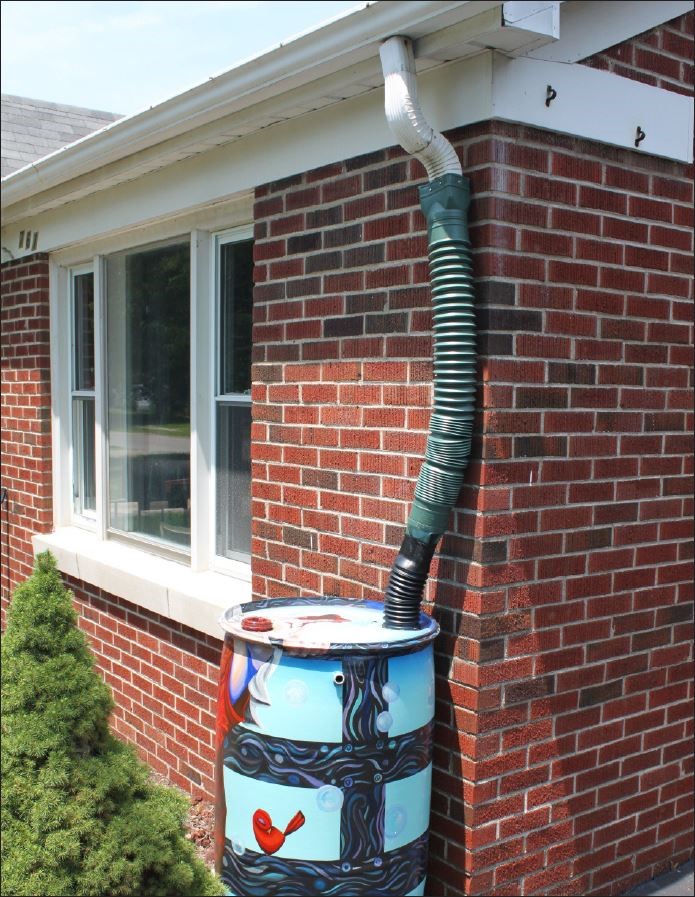
Green Infrastructure and Low Impact Development
Conventional stormwater management quickly routes stormwater runoff from impervious surfaces into receiving streams. This can cause high stormwater flows that overload streams and result in degraded stream channels that may require concrete lining to counter excessive erosion.
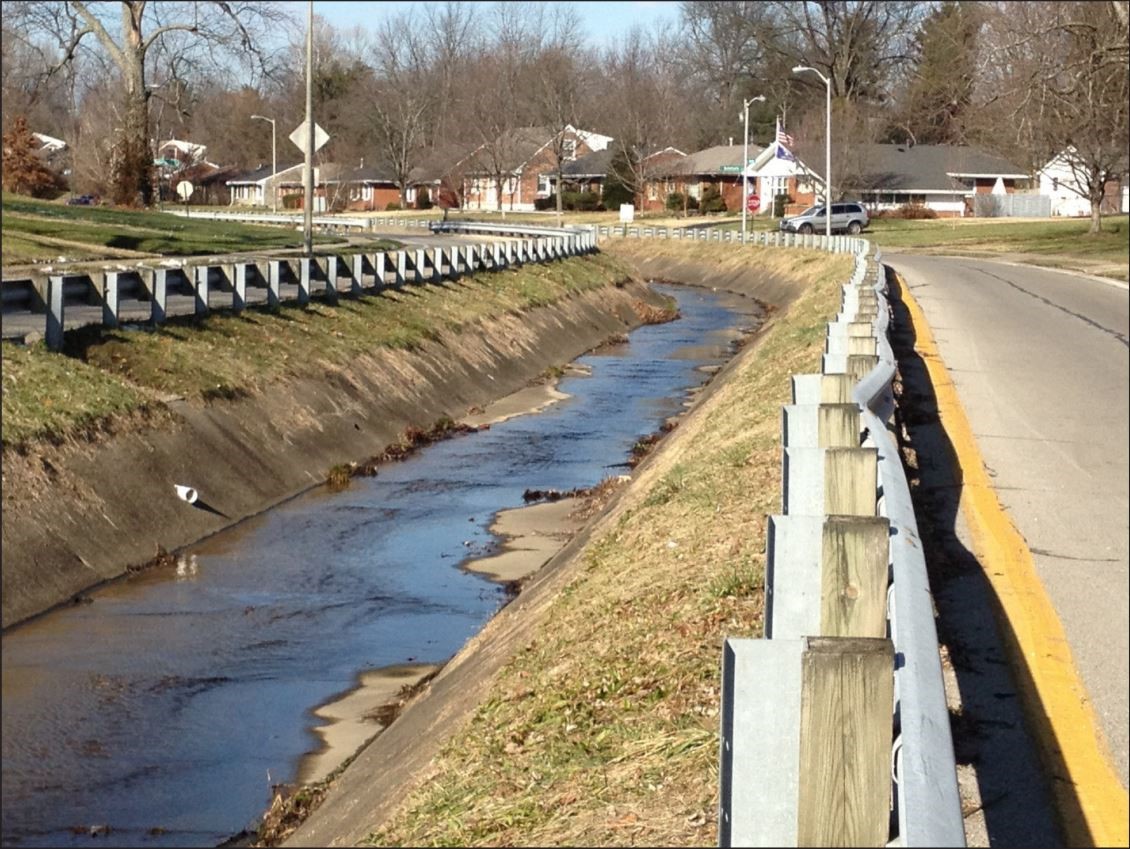
Green infrastructure and low impact development (LID) differ from conventional stormwater management by employing techniques to reduce the volume of stormwater runoff and associated pollutants that flow into natural streams. LID techniques include resource preservation and structural controls. Resource preservation protects undeveloped sites by preserving riparian buffers (streamside vegetation) and soils that receive infiltration, reducing fertilizer applications, and picking up trash and pet waste. Structural controls decrease runoff volume and increase infiltration and evapotranspiration by implementing rain gardens, rainwater harvesting, riparian buffers, green roofs, permeable pavement, bioswales, and wetlands.
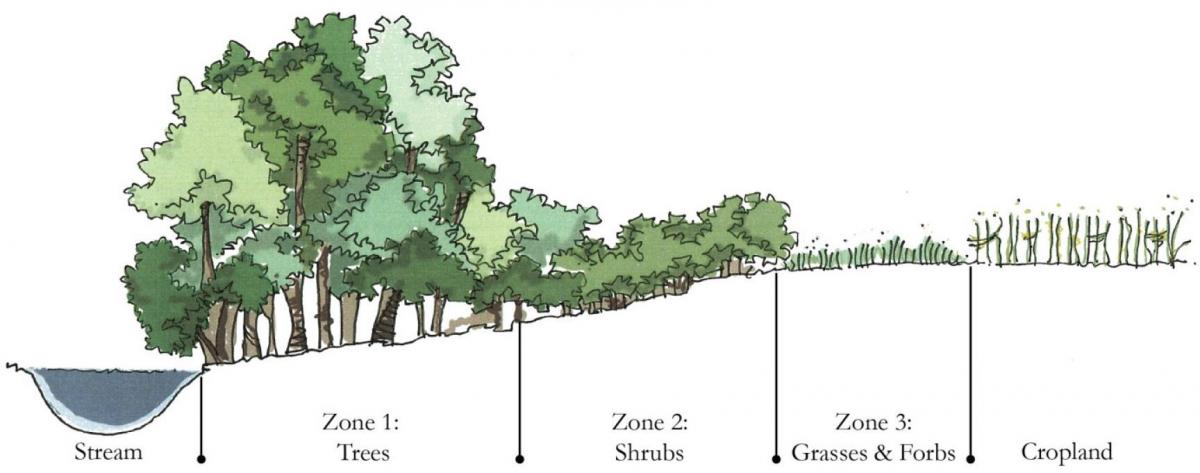
Explanation for some common stormwater terms
Stormwater - Stormwater is excess water from rainfall and snowmelt that flows over the ground and does not infiltrate into the soil.
MS4 – MS4 stands for Municipal Separate Storm Sewer System, which requires a permit from the Kentucky Division of Water. The permit authorizes UK to discharge stormwater runoff into receiving streams while implementing six minimum control measures described by the permit. [link to permit]
storm sewer – A storm sewer is a system of water conveyance that transports stormwater runoff from impervious surfaces into receiving waterbodies.
BMP – Best management practices, or BMPs, protect water quality by implementing measures to reduce stormwater runoff volume and pollutant transport.
Storm drain – Storm drains are inlets that allow surface runoff to flow into a storm sewer that transports the runoff to a receiving waterbody.
Illicit discharge – Storm drains are intended to receive nothing but stormwater since they discharge directly into streams, and it is illegal to place lawn clippings, oil, cleaners, or any number of other materials into a storm drain.
